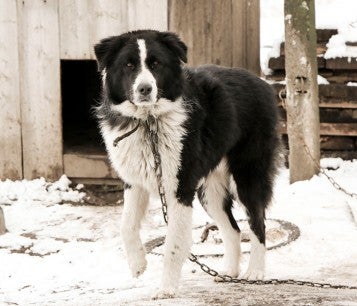As the weather gets colder, you may worry about the cats you see around your neighborhood.
They may be pets whose owners let them outside, or they could be community cats, a group that includes ferals (who are afraid of people) and strays (who've been lost or abandoned). No matter how resourceful these outdoor cats are, they need help surviving winter.
If you've got time to help, the kitties will thank you! Follow these tips to help your local outdoor cats during the cold months.
Give outdoor cats shelter from the cold
Yes, their thickened winter coats help feral and stray cats weather winter's chill, but they still need warm, dry, well-insulated and appropriate-sized shelters. It's cheapest to build your own, and there are many plans and instructions that can help you get started.
How to get help building your outdoor-cat shelter
A shelter-building party can be a fun weekend project! Ask your friends, neighbors and coworkers to join in. Try contacting local youth groups to find out if they will help build shelters as a service project.
Where to find materials
You may find inexpensive or free materials by asking building-supply stores or contractors if they have scrap lumber. Ask friends, neighbors and coworkers for used dog houses, which can be modified to make good shelters. You can even use a storage bin from the local hardware store. Creating a lifesaving shelter for outdoor cats can be easy and inexpensive.
Why size matters with cat shelters
A shelter must trap the cats' body heat to warm its interior. If the shelter is too large, it will be difficult for the cats' body heat to keep the space warm.
What to put in your outdoor cat shelter
Straw allows cats to burrow. Pillowcases loosely stuffed with packing peanuts and shredded newspaper also work.
Keep things clean: Replace straw and newspaper if moist or dirty, and wash and re-stuff pillowcases as needed.
However, if it's really cold where you live and you can't check on the shelters regularly, don’t use the above insulation. Instead, "wallpaper" the shelter's inner walls and floor with Mylar. It reflects back body heat, and it's okay for cats to lie on it.
What NOT to put in your outdoor cat shelter
Don't use blankets, towels or folded newspaper; they absorb body heat and chill cats who are lying on them. Forego hay too, which may irritate noses and cause allergic reactions.
Commit to supporting dogs who live outdoors during cold weather by advocating to ensure that every dog has access to a shelter that keeps them warm enough and provides protection from the elements.

Give outdoor cats food and water
Where to place food and water
Protect outdoor cats from hunger and thirst this winter by keeping their food and water from freezing. View tips on how to do this. If you can do so without compromising the privacy and security of the shelter, place food and water near the shelter so the cats won't have to travel far.
One way to protect food and water is to place two shelters—doorways facing each other—two feet apart. Then create a canopy between them by securing a wide board from one roof to the other. Then put the food and water under the canopy.
How to keep outdoor cats' food and water from freezing
What you put food and water in can make a difference. A thick plastic water container that's deep and wide is better-insulated than a thin plastic or ceramic container. A solar-heated water bowl can prevent or delay water and canned food from freezing.
If shelters are well-insulated, you can put bowls of dry or moist food inside them, far from the doorway. Even if the moist food freezes, the cats' body heat will defrost it when they hunker down in their shelter.
Don't put water bowls inside the shelter. Water is easily spilled, and a wet shelter will feel more like a refrigerator than a warm haven. Do your best to keep water from freezing.
Heated Water Bowls on Amazon.com
To TNR or not to TNR community cats in winter?
Don't attempt TNR activities in the winter unless you can return the cats to a warm shelter.
People may be concerned about performing trap-neuter-return during winter because they worry about releasing females who have had their stomachs shaved for surgery. But winter trapping has its advantages. There are far fewer pregnant cats, which makes for a less complicated surgery, and you'll prevent the births of many kittens come spring, when the majority are born.
Before you start winter trapping, however, you must ensure that the cats will have adequate shelter when you return them to their territory. If you've followed the directions above, they'll be in good shape.

